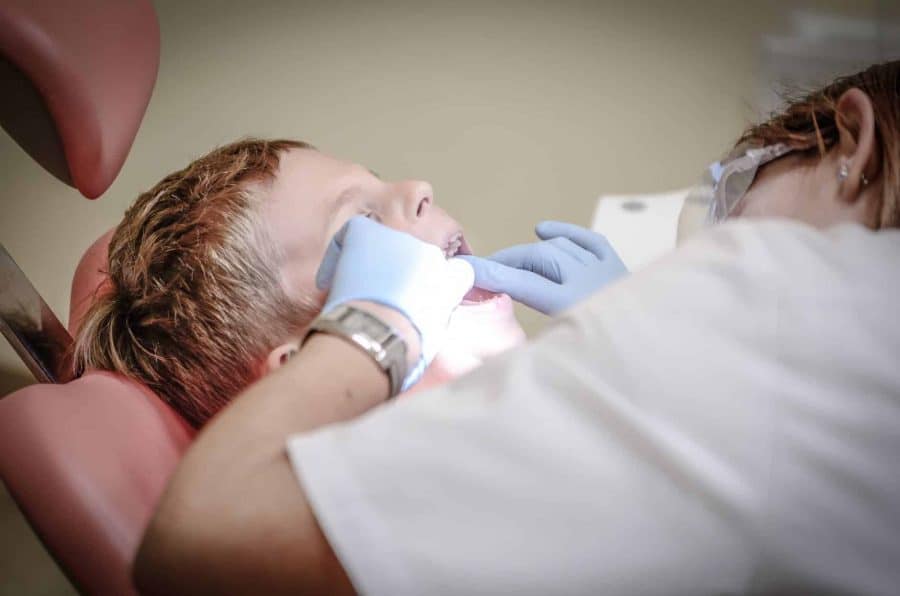Having a healthy mouth is as essential as having a healthy body. People often tend to ignore oral problems that are not painful or unaesthetic. However, in the long run, it is these problems that develop into an illness. Out of many dental treatments available to fix your mouth, one of the most sought is a dental crown. Recent advancements in technology have made it a highly successful procedure. Yet, several people are still reluctant to get a dental crown. Let us break it down for you with some fantastic reasons to get a crown for your teeth.
About Dental Crown:
It is merely a restoration or a cap that is placed on a fabricated tooth to rebuild the aesthetics, function, and structure of the damaged tooth. If multiple teeth are involved, it is known as a ’bridge.’ A dental crown can be of a variety of materials- metal, porcelain, porcelain fused metal, composite resin, etc. Here are some reasons that might require you to get a dental crown:
1. To restore a decayed or lost tooth:

The outer layer of a tooth is called ‘enamel.’ This layer is subject to different types of physical, chemical, or biological abuse. The most common reason for tooth damage is tooth decay due to bacteria. These bacteria that reside on enamel produce acid that leads to the demineralization of enamel, and this is called ‘caries.’ Treatment depends on the extent of damage caused by these bacteria in the direction of the pulp. If it has reached the pulp, a Root Canal Treatment is required in which the tooth is prepared, and the pulp cavity is filled with a medicated solution to halt the damage. This tooth is finally covered by a dental crown to regain the lost structure and aesthetics of the original tooth. A dental crown also provides perfect restoration for a tooth lost due to periodontal problems (gum problems). In that case, the crown is supported by caps on adjacent teeth.
2. To treat discolored teeth:

As mentioned before, a tooth is subject to different types of wear and tear. Physical abuse includes bumping teeth on a hard object. In such situations, the impact is such that it damages the pulp, and that causes yellowish to blackish discoloration of the tooth. In that case, a dental crown provides excellent coverage to regain the aesthetics of the original tooth. Customized tints and shades on the crown produce a nearly identical look and make it impossible to tell the difference. Other reasons for discoloration are tea, coffee or tobacco stains, chemical wear due to acidic foods, tooth damage due to GERD. In these cases, professional whitening methods like scaling and bleaching may be of use only for extrinsic stains. For intrinsic discoloration, a dental crown is an optimum treatment to cover up a stained tooth and make it look just as it was before.
3. To treat a fractured tooth:
A tooth may get fractured due to multiple reasons- accidents, bruxism, sports injuries, etc. Such injuries occur on the front teeth, and these teeth always show up when you smile or talk. Therefore, it is imperative to treat these teeth. If a little part of a tooth has been chipped off, a crown is not required, and the tooth is treated conservatively with other dental materials (composite resin). However, if a large part of the tooth is lost, regaining the strength and structure of the original tooth is difficult. Therefore, a dental crown is quintessential in such situations. Most of the crowns for front teeth are made from ceramic or ceramic fused to metal to mimic the look of natural teeth.
4. To enhance aesthetics:

Cosmetic enhancement of teeth has seen tremendous development for a few years. People’s pursuit of looking perfect is taking it to a whole new level. Those who do not admire their teeth or have defective teeth often tend to get dental crowns for their teeth. In addition to that, people who work in industries that demand them to look impeccable or have a beautiful smile also go for dental crowns. These crowns sit on natural teeth that are prepared to receive them. The dental crowns can fix stained teeth that cannot be treated by professional whitening, crooked teeth, or ill-shaped teeth. Materials used mostly include porcelain fused metal, ceramic, or composite resin.
5. To treat primary teeth:
Children have 20 primary teeth before they grow 32 permanent teeth. These teeth are weaker than permanent teeth because they have a less dense mineral composition in their enamel and dentin. Therefore they are more prone to bacterial decay and other physical injuries. Cavities on these milk teeth are a frequent event, and therefore, a dental crown is an effective treatment to tackle it. Nowadays, stainless steel crowns cover the teeth, and when a permanent tooth erupts, they wear off on their own. Most pedodontic crowns come prefabricated in different sizes for different teeth, and most of them are made from stainless steel. The crown protects the entire breadth of the tooth from further decay. Stainless steel is the material of choice because it is more cost-effective than custom made crowns and are easy to fit as they come prefabricated. For children, it also cuts down the number of visits required to the dentist.
A dental crown is a revolutionary treatment you can get for multiple oral problems. The types of materials used to make a crown these days are highly durable and bio-compatible. Also, there is no greater joy than seeing your beautiful smile come back as you get a dental crown. No matter what your oral problem is, it is always a good idea to invest in a dental crown. It will help you smile without hesitation for years to come.
References:
- https://medium.com/forever-young/do-you-need-dental-crowns-find-out-with-our-guide-6becf759c756
- https://www.dentaly.org/en/dental-crown-information/

Isreal olabanji a dental assistant and public health professionals and has years of experience in assisting the dentist with all sorts of dental issues.
We regularly post timely and trustworthy medical information and news on Fitness, Dental care, Recipes, Child health, obstetrics, and more.
The content is intended to augment, not replace, information provided by your clinician. It is not intended nor implied to be a substitute for professional medical advice. Reading this information does not create or replace a doctor-patient relationship or consultation. If required, please contact your doctor or other health care provider to assist you to interpret any of this information, or in applying the information to your individual needs.





